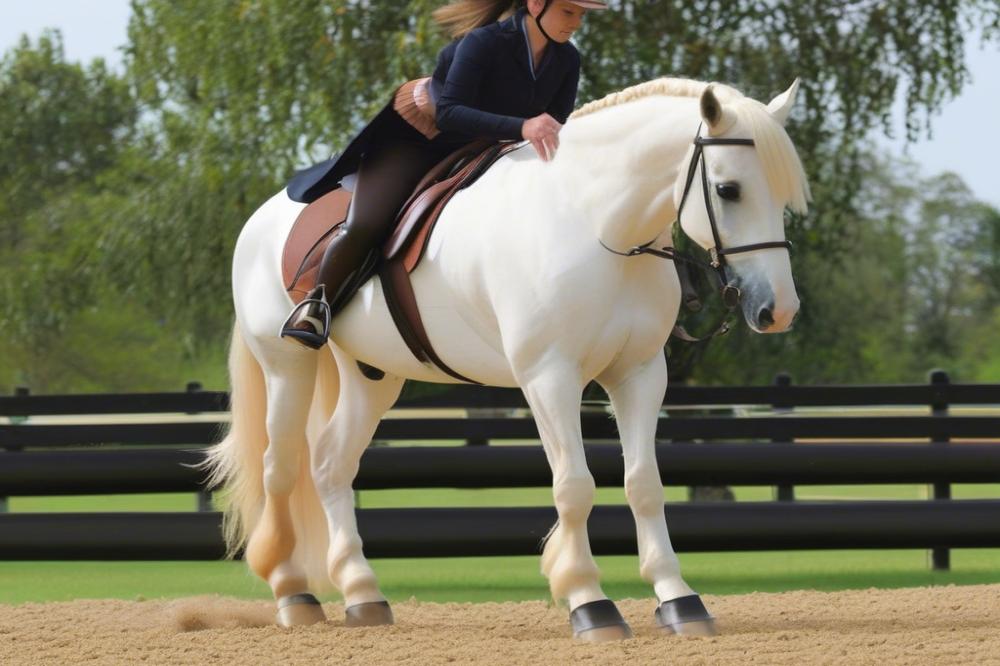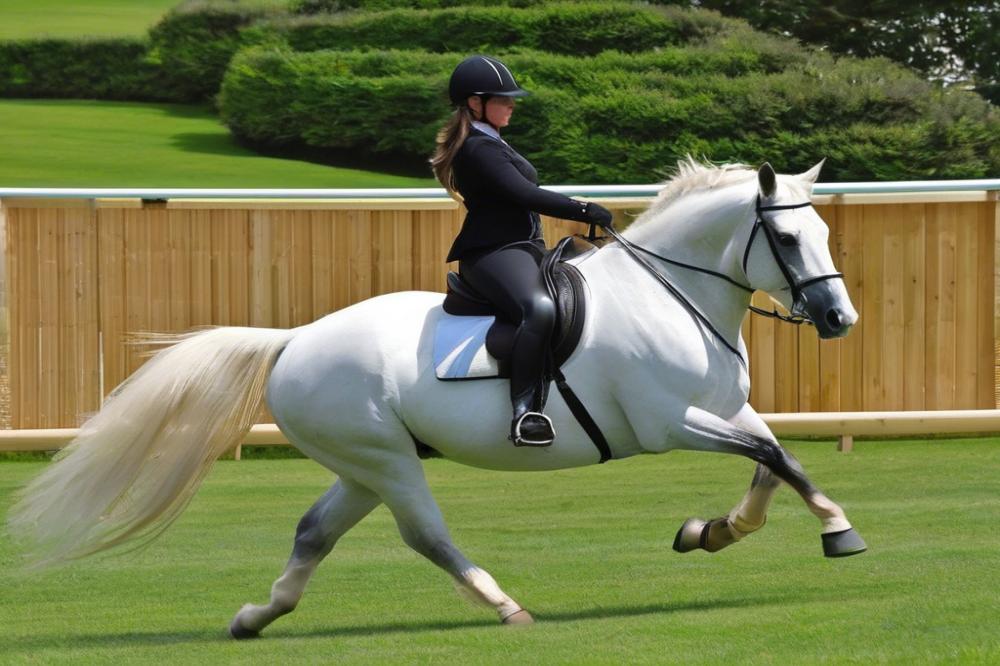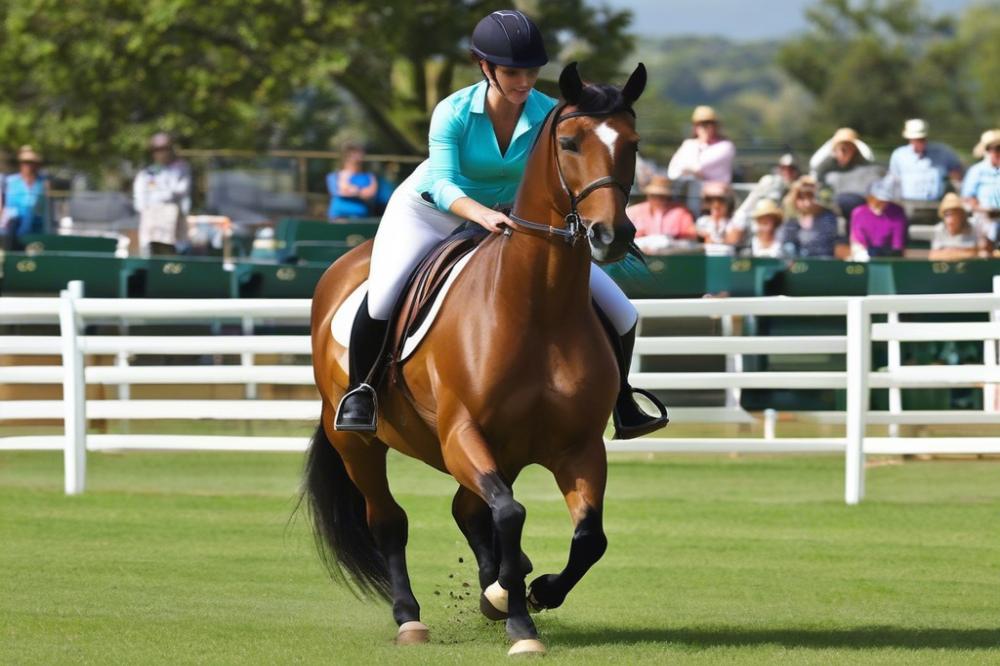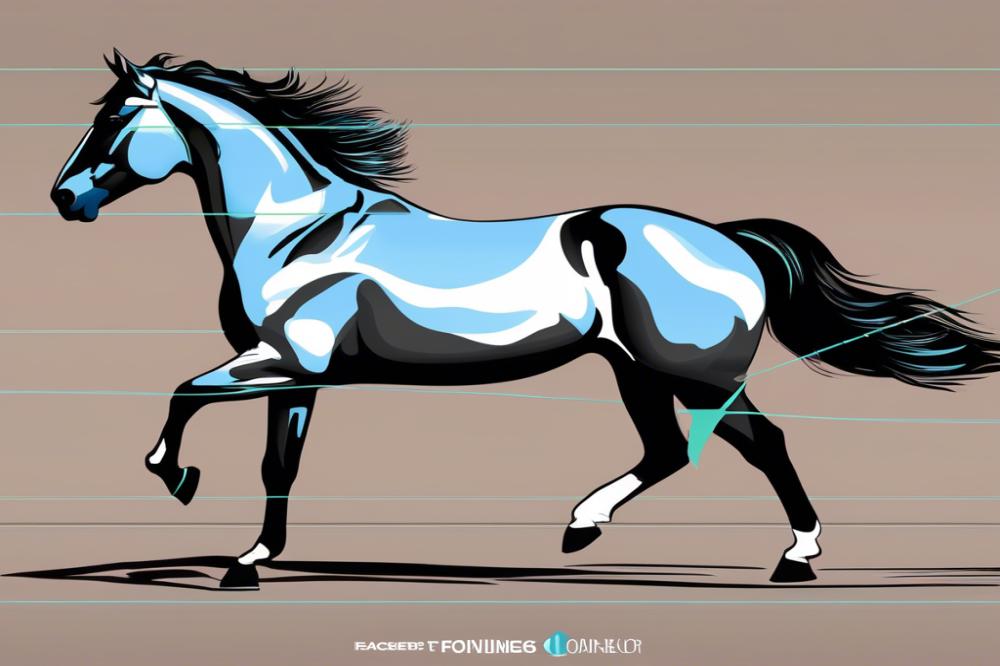Understanding the Art of Horse Bending
Have you ever watched a skilled rider glide through a course, their horse bending and flowing effortlessly? It’s quite a sight to behold, isn’t it? Horse bending is not just a fancy trick; it is a vital skill that enhances both horse riding and horse training. Learning how to bend correctly allows for better communication between rider and horse, creating a harmonious partnership. Think of it like dancing; when both partners are in sync, the performance shines!
The importance of mastering horse bending goes beyond aesthetics. It plays a significant role in your horse’s overall physical well-being. Bending techniques can improve flexibility, balance, and even strength in your equine friend. After all, a well-bent horse is less likely to get injured and more able to perform at its best. So, if you want your rides to feel smoother and your horse to be healthier, paying attention to bending is key.
This article aims to offer comprehensive guidance on teaching a horse to bend. We will delve into the various equestrian techniques that make the process easier for both rider and horse. It’s not a race to the finish line but rather a journey filled with learning and growth. Expect to find tips, tricks, and even a few common pitfalls to avoid along the way. You might wonder, “Can 2 people ride a horse?” Well, yes, but that’s a different kind of bending!
Horse care isn’t just about feeding and grooming; it also involves understanding your horse’s movements and body language. Bending is part of that puzzle. By the end of this article, you will be equipped with the knowledge to help your equine partner find comfort in bending, allowing for a deeper connection between you two. So saddle up, and let’s get started!
Understanding Horse Bending

Definition of Bending and Its Role in Horse Movement
Bending is all about a horse’s ability to curve its body to follow a certain path, like turning corners or following a circle. Think of it as a dancer gracefully moving across a stage. In horse riding, good bending helps maintain balance and flexibility. This skill plays a vital role in how effectively a horse moves. Proper bending means that the horse can use its body better, making strides feel smoother. Riders can feel the difference when a horse bends well—it’s like trying to drive a car with a flat tire compared to one that’s in tip-top shape.
Benefits of a Well-Bent Horse for Riders and Trainers
A horse that bends properly offers many rewards. Riders enjoy enhanced control and improved communication with their mount. Trainers benefit, too, as they can teach horses more advanced equestrian techniques when bending is established. This skill contributes to a horse’s overall health, promoting better fitness and reducing the risk of injury. It’s easier for a well-bent horse to execute movements in dressage or jumping. Everyone knows that riding a well-trained horse is like taking a ride in a luxury car—smooth and enjoyable.
Common Misconceptions About Bending
Many folks think bending is just about forcing the horse to turn its neck. That’s far from the truth. It involves the whole body working together, like an orchestra playing a symphony. Another common myth is that you need to push a horse hard to get it to bend. In reality, patience and gentle guidance are essential. Some riders also believe bending is only for advanced equestrian skills, but every horse can benefit from it, regardless of experience. So, let’s set the record straight: bending is for everyone, and it’s not just about getting through an obstacle course. It’s a journey toward better communication and connection between horse and rider.
Preparing for Bending Exercises

Assessing Your Horse’s Current Level of Flexibility
Before you dive into bending exercises, take a moment to assess your horse’s flexibility. Just like people, every horse has its own limits and comfort zones. Watch how your horse moves in the pasture. Can it stretch its neck or engage its hindquarters easily? These small observations give you insight into what to expect during training.
Next, conduct a few gentle stretches yourself. Does that hay muncher resist or move smoothly? It might be reluctant one day, and then a superstar the next. Different days bring different moods for both you and your horse. This exercise gets you in tune with how ready your horse is for bending.
Importance of Groundwork and Building Trust
Groundwork serves as a solid foundation for your horse bending training. Engaging in groundwork develops respect and trust, which are critical equestrian skills. Think of it like laying bricks before building a house. Without that firm base, the structure might crumble later.
You can start with simple exercises, like leading or lunging. Make it a fun game! Use treats and praise. The more positive experiences they have with you, the more eager they’ll be to bend later. In this way, you create a partnership founded on mutual respect.
Physical Conditioning and Warm-Up Routines
Getting your horse fit is not just about showing off; it’s about making sure they can bend gracefully. Consider it like preparing for a sports day. Just as athletes warm up before a big game, your horse also needs this time!
Begin with gentle walks and stretches. These movements warm up muscles and prepare joints for more intense action. You might feel somewhat silly, but horses enjoy a bit of rhythm and movement, almost like a warm-up dance!
After some initial exercises, include trotting and cantering on a lunge line. This part of horse training will build overall strength. A strong horse can bend more effectively, just like a gymnast with stronger muscles performs better in routines.
Feeling good and ready to ride after a solid warm-up? That’s the goal! When they bend with ease, even the most serious riders can’t help but smile.
Basic Tools for Teaching a Horse to Bend

When it comes to horse training, having the right equipment is essential. You’ll need a few basics to start teaching your horse to bend effectively. First, a good saddle is key. It should fit both you and your horse comfortably. A well-fitted saddle helps maintain balance, which is crucial for effective communication.
Next up is the bridle. A proper bridle allows you to transmit your signals clearly. It keeps the horse’s head positioned correctly as you guide them through turns. Don’t forget riding aids! These consist of your legs, hands, and seat. Each aid plays an important role when bending a horse.
Understanding Aids
Let’s dive deeper into those aids. Your legs are like the sidekick of your hands. Use them to encourage the horse to move away from the pressure, guiding them into the bend. If your legs are too tight, it may make the horse feel uncomfortable. Keep a light touch.
Reins are another crucial piece of the puzzle. Pulling too hard can confuse your horse. Think of the reins as a gentle whisper guiding your horse, rather than a strong shout! They should signal when you want the bend to happen. Use the inside rein for gentle cues, and the outside rein to contain the bend.
Your seat is where the magic begins. It’s your center of balance. Leaning can help signal turns. If you’re sitting upright and relaxed, your horse will instinctively follow your lead. It’s like riding a wave; you want to work with the motion, not against it.
Properly Fitting Equipment
Now, let’s talk about fitting your equipment. A saddle that’s too tight can cause some serious discomfort for your horse. Always check for pinching at the shoulders. With a bridle, ensure the bit sits comfortably in the mouth. Look for signs of stress like a gaping mouth. You want your horse to be relaxed, not stressed.
For those riding aids, practice using them softly. A snug feel is essential but not painful. Remember that every horse is different; what works for your friend’s horse might not work for yours. Spending time figuring out your horse’s unique needs can make a big difference.
In the end, good communication is the secret. Think of it like a dance between you and your horse. The better you fit your gear and understand how to use your aids, the smoother that dance will be. So, grab your gear, and let’s get ready to teach your horse some new equestrian skills!
Step-by-Step Guide to Teaching a Horse to Bend
Initial Groundwork Exercises: Yielding to Pressure
Getting started means you need to establish trust. Begin with basic groundwork. Ask your horse to yield to pressure. Use a rope halter and lead line. Encourage your horse to move away when you apply gentle pressure. This builds their understanding of your cues. It’s like telling them, “Hey, follow my lead!” Stay calm and patient. Reward any small progress with treats or praise. Horses love snacks, just like humans love pizza!
Introducing Bending in Hand Before Under Saddle
After establishing groundwork, it’s time to introduce bending. Stand beside your horse and hold the lead rope. Gently pull your horse’s head toward you, asking them to bend. It’s similar to convincing a friend to lean in for a secret. If your horse resists, don’t force it. Instead, practice yielding first. Continue to ask for slight bends. Use soft touches and soothing words. This makes the horse feel comfortable. Building this foundation prepares them for riding later.
Progressing to Bending at the Walk, Trot, and Canter
Once your horse bends easily on the ground, it’s time to ride. Start at the walk. Apply light rein pressure to guide their head. As they bend, make sure to praise them. That little pat on the neck does wonders! If they go stiff, slow down. Transition to the trot when they are ready. Remember, trot work involves more movement, so keep your body relaxed. Cantering comes next. It adds excitement but also requires balance. Stay focused and gentle.
Using Circles and Lateral Movements as Practice
Circles are your best friends when teaching bending. Find a safe area and trot in a circle. Encourage your horse to bend around your leg. Use a soft rein and leg pressure for guidance. Think of it as riding a roller coaster — leaning in makes the ride smoother! Add lateral movements as they get comfortable. Shoulder-in and haunches-out are great exercises. These variations keep things interesting. You and your horse can both enjoy the ride!
Common Challenges and How to Overcome Them
Sometimes things won’t go as planned. Horses may resist bending or feel unbalanced. When this happens, take a step back. If they’re nervous, give them time. Rushing a horse can lead to frustration for both of you. Unexpected spookiness is normal. Stay calm and patient; it’s part of horse training. You might also find your horse prefers one side over the other. Focus on the weaker side to build strength. Consistency is key, so practice in short sessions. If the challenge feels tough, it’s okay to ask for help from an experienced rider or instructor. Teamwork makes the dream work, right?
Assessing Progress and Making Adjustments
How to evaluate your horse’s bending ability
Evaluating your horse’s bending ability can seem tricky at first. Look closely during your practice sessions. Is your horse responsive to your cues? Notice if they bend willingly in both directions. If they seem stiff or resist, there’s a clue. Focus on how smooth their transitions are. A horse that bends well will demonstrate fluid movement rather than awkward stiffness. Keep an eye on their eyes, too. Ears that turn back indicate they are listening and engaged, while ears pinned back suggest discomfort or confusion.
Another thing to watch for is how easily your horse turns. Does it seem like they are fighting against the pressure? If so, you might need to change your approach. An animal that twists and turns with ease shows they have developed solid equestrian skills. Take your time assessing their progress. Patience is key here!
Signs of resistance or misunderstanding
Sometimes, your horse might throw up red flags. A sudden halt or an unwillingness to move can mean they’re confused or just not understanding what you expect. Does your horse back away from the bend? That’s a sign they might be feeling overwhelmed. Some horses may also dive into a fast trot or rush through bends, showing they’re more interested in racing forward than bending properly.
Remember, bending is not just about physically stretching them. It’s also about understanding what you want them to do. If they keep bumping their head against the wall, so to speak, maybe you need to provide different cues or try a simpler exercise. Horse training requires flexibility, just like your horse does!
Adjusting methods and exercises based on horse’s response
Adjustments can be essential if your horse struggles. If they seem resistant, consider slowing down. Making lots of small changes helps them feel secure. Sometimes, revisiting an earlier exercise can help. If they excelled at a simpler task, return to that before moving on again. Horse riding should be enjoyable for both you and your animal!
You might also try using a few equestrian techniques that involve ground work. Leading your horse around cones can make bending feel like a game rather than a chore. Just like how kids need different teaching methods, horses do too. Some respond better to visual cues, while others need reinforcement through their favorite treats.
Always pay attention to how they respond. If your horse gets frustrated, take a break. Sometimes, a little downtime can work wonders. A happy horse learns better. With all this in mind, remember: bending well is about communication. It’s a dance you both need to enjoy!
Incorporating Bending into Regular Training
Strategies for Maintaining Flexibility and Responsiveness
Bending isn’t just a fancy term; it’s crucial to the overall performance of your horse. To start, practice basic movements that encourage flexibility. Think of it like stretching before a big game; it gets everyone ready. Use exercises that promote lateral movements like leg yielding or serpentines. These activities can enhance your horse’s range of motion and allow them to respond better to your cues.
Consistency is essential in horse training. Incorporate bending into your daily routine. If you ride regularly, dedicate just a few minutes to bending exercises. Reward your horse for small wins to keep them motivated. A simple “good job!” can brighten their day and encourage them to try harder. Don’t forget to give them breaks as well; learning is just as tiring for them as it is for you.
Integrating Bending into Different Disciplines
Whether you’re in the dressage arena or excitedly jumping fences, bending has a place in every discipline. In dressage, it helps create fluid movements and those graceful arcs that wow the judges. Use simple circles or figure eights to help your horse bend properly. Aim for smooth transitions between gaits, and don’t be afraid to slow down if you need to.
Jumping can also benefit immensely from bending. Think of it this way: when a horse knows how to bend around a corner, they can prepare better for upcoming jumps. Practice bending during your approach to the jump. This will result in a more balanced and controlled leap.
Tips for Combining Bending with Other Training Goals
Bending isn’t a standalone skill. Find ways to mix it with other training objectives. For example, combining bending with speed training can create an agile horse. If you’re working on speed, ensure that your horse doesn’t lose their ability to bend. Slow down a bit, focus on form, and then gradually increase tempo.
Focus on transitions too. When teaching a horse to bend, integrating smooth transitions from walk to trot and vice versa offers great results. Your partner will become more aware of your cues. A responsive horse during training equals great performance when it counts.
Think about your horse’s comfort in the process. A relaxed horse bends easier. Pay attention to their body language. Are their ears perked up? Are they relaxed? This means they are in the zone. If you see signs of tension, it’s time to back off and re-evaluate.
Incorporating bending into your training sessions will not only improve your equestrian skills but also strengthen the bond between you and your horse. Remember, training should be fun. If it’s not, find something quirky to do, like riding in a Halloween costume! After all, who doesn’t want a horse that can bend and do tricks at the same time?
Wrapping It Up: The Path to a Flexible Relationship
As we tie the reins on this discussion, let’s recap some key points about teaching your horse to bend. First off, remember that bending is not just about turning corners. It’s about building a connection between you and your horse, enhancing its overall balance and responsiveness. Using aids, maintaining proper posture, and practicing patience can make a world of difference. Those little steps in the beginning add up to a significant transformation over time.
Training a horse takes time—there’s no magic wand to wave here. Just like one wouldn’t expect a toddler to run a marathon after only learning to walk, don’t expect your horse to master bending overnight. Instead, embrace the journey! It’s perfectly normal to experience ups and downs along the way. Some days will feel like an exciting trail ride, while others may seem a bit like a wild rodeo. Pulling on your reins too tightly can only lead to confusion; give yourself and your horse time to learn and adjust. Remember, consistency is key. When you train regularly and reinforce good habits, the lessons will stick.
Now, let’s not overlook the benefits of a well-bent horse. This skill can lead to improved balance, better transitions, and a more enjoyable ride for both of you. An agile horse is often a happier horse, and when that horse feels good, it leads to a delightful partnership. Want to impress your friends at shows or just have a smoother ride on the trails? A horse that bends well can make you look like a pro, even if you’re just in it for the fun. Plus, who doesn’t want a horse that can execute those fancy maneuvers without a fuss, right?
In the journey of shaping your horse’s training, consider each session an opportunity to connect at a deeper level. Just think of it as a dance. You lead, but it’s a duet. No need for an English horse bit severity chart to tell you that a gentle approach often yields the best results. Whether you’re riding a miniature pony or a mighty draft horse, each has its unique challenges and rewards – just like the diverse world of horse life horse sizes.
In closing, trust the process. Keep the practice light and fun and always remember to celebrate your horse’s progress. After all, every small victory counts. So saddle up, grab your reins, and enjoy the ride!



